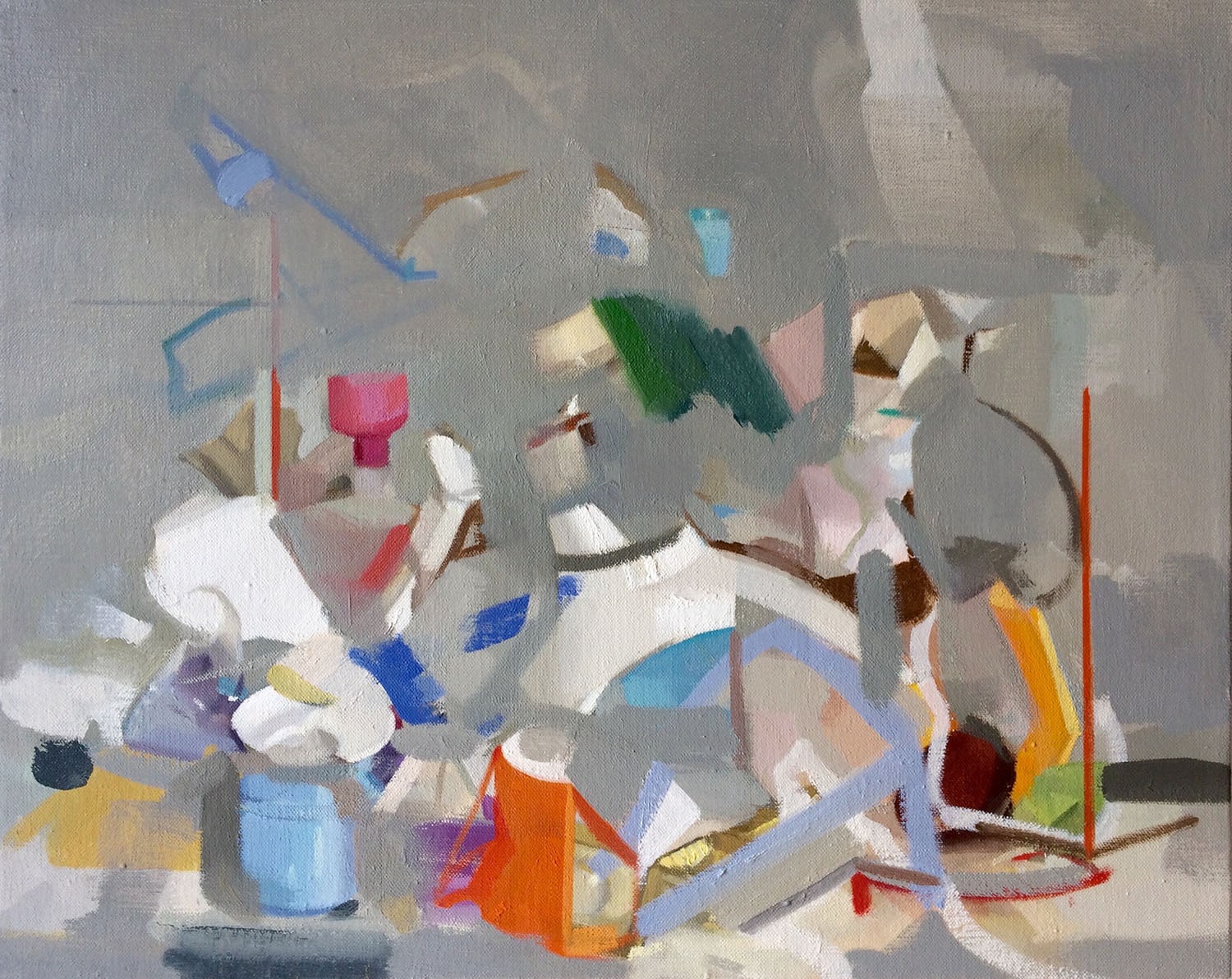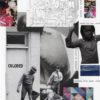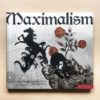Amy Mahnick is an artist based in Detroit, MI who is known for her observed still life paintings of the assemblage sculptures that she makes from discarded materials: materials whose gestural forms, in these works, often become animated personalities. In recent works, multiple paintings are disassembled and recombined, juxtaposing disparate forms and multiple viewpoints to create complex, sometimes chaotic, spaces that seethe with a palpable energy.
In this interview, Amy shares the experiences and influences that have shaped her path, from discovering the expressive potential of cardboard milk cartons, to the revelation that directly collaging texts into her paintings infuses them with the energy of the printed words, even when covered and no longer visible.
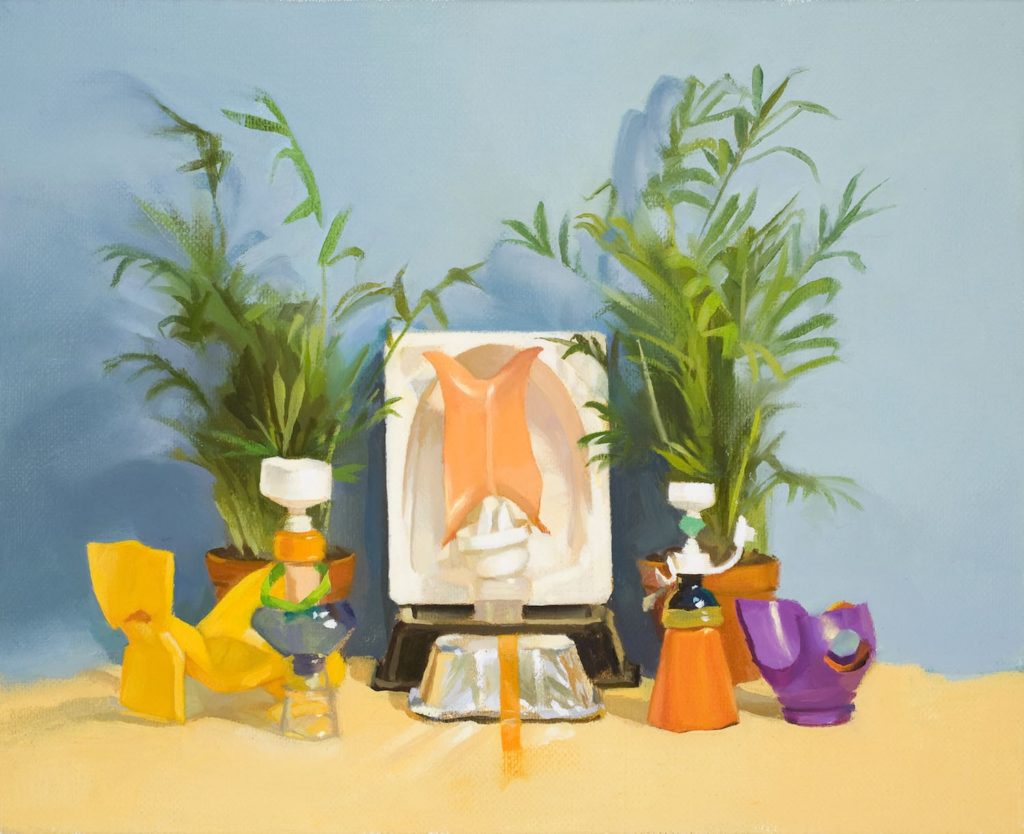

AB: What experiences have most influenced your work? How do you describe your work?
AM: Describing my work is hard because it’s a mix of a lot of things, but it’s primarily abstract painting rooted in the observation of still life objects that I make out of things people overlook or throw away. The second part of this is important, and not for environmental reasons, exactly, as people often think, but because of the act of not seeing. I would also say that my paintings have a lot of energy, often chaotic energy, as if a strong wind had blown through and picked up all of the objects in its path and redistributed them. There are many parts left unfinished, while others are painted over and over again. Most forms are fragmented and lately there are a lot of forms that don’t relate to each other.
There are a few experiences that stand out as influences. Right before I moved to New York I saw Picasso and Things at the Cleveland Museum of Art. The entire show spoke to me, but I didn’t know why. I don’t think I even asked the question. I just loved it. And the funny thing about it was that the reason I was headed to NY was to study classical figurative painting at the New York Academy of Art. If someone had told me back then that I would come to be painting directly, rather than indirectly, and with bright colors and abstractly, I wouldn’t have believed them.
There’s DeKooning’s Excavation, also. The first time I saw it in person I think I sat in front of it for an hour, mesmerized. This was also before the Academy. The DeKoonings and Picassos knew more about me than I knew about myself back then.
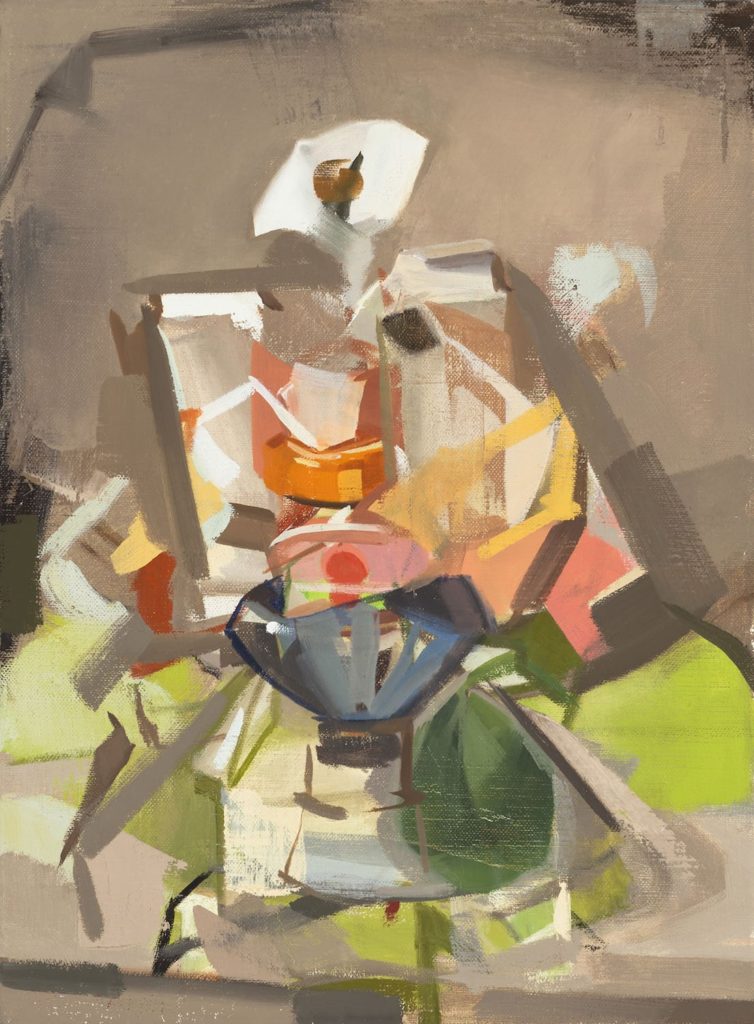
Most significantly, though, is the time I discovered the expressive potential of cardboard milk cartons. I was still learning to paint the figure, this time at the Art Students’ League, but at home I was painting the holes in trees and baby birds in their nests from photographs. The trees appeared to be crying out, or weeping if sap was dripping down, and the birds appeared vulnerable. I saw a similar expression in the spout of a milk carton and that set me off on the path which I’ve pretty much been on ever since, with the exception of most recently. I painted the cartons white to block out the lettering, covered some in nylon stockings, then poured plaster in between the fabric and cardboard. Eventually I set them up in a still life. This is where my interest in the Picasso show begins to make sense for me. The faceted, simplified forms felt very cubist and expressive.
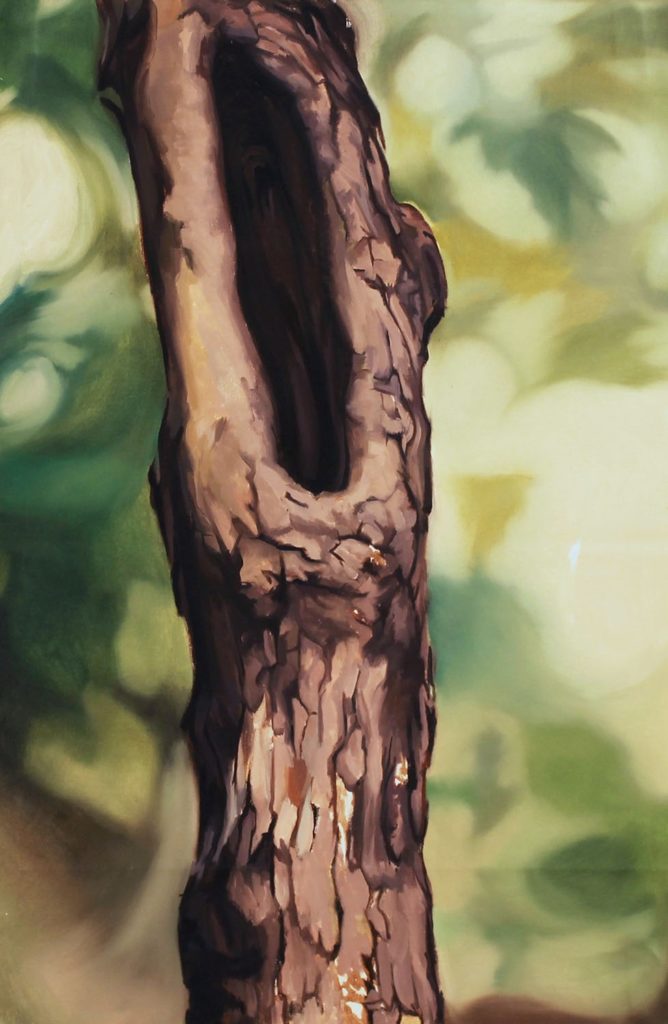
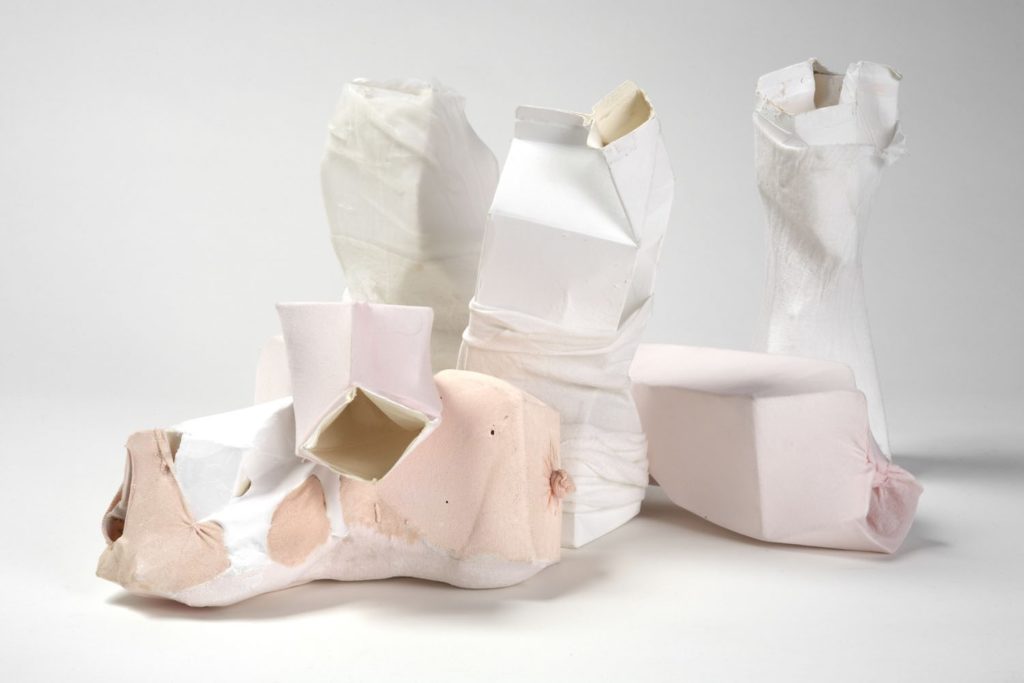
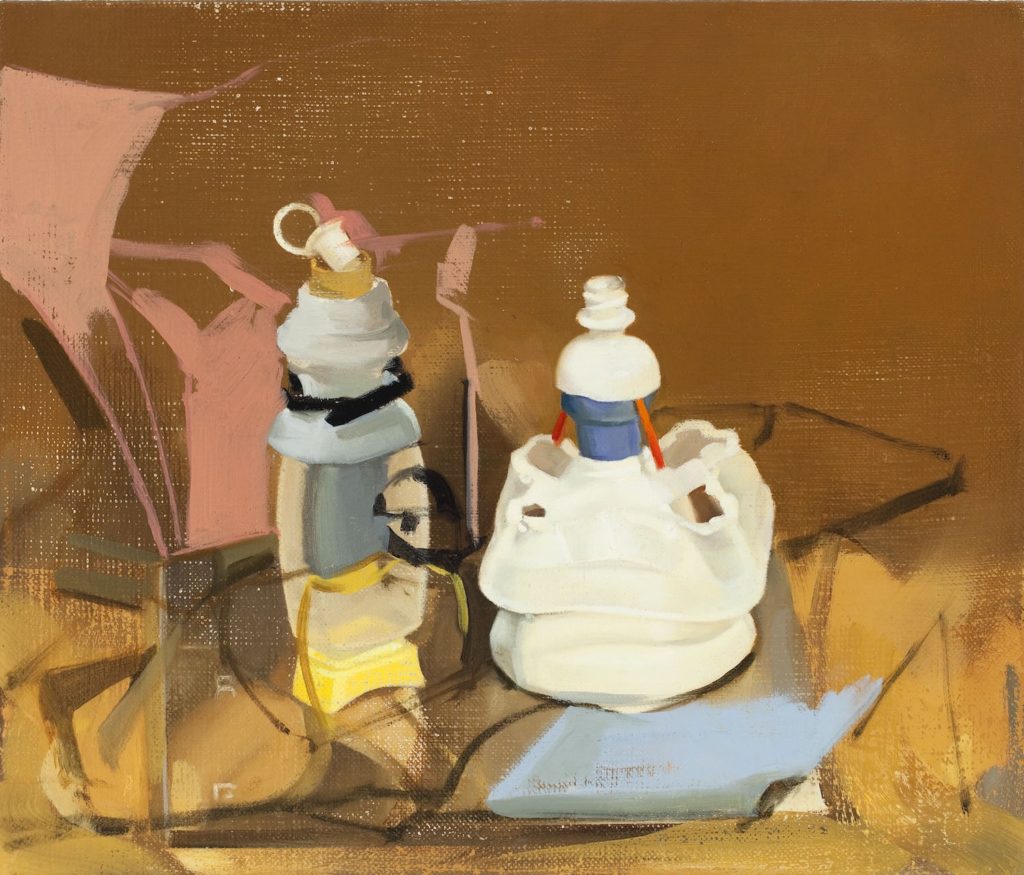
The newest shift in my studio has been addressing animal rights through more traditional set-ups. I’ve been working out compositions for paintings of a ceramic animal paired with a book from an author in the movement. One of the first was The Cry of Nature, by Stephen Eisenman. So maybe this shift isn’t so much of a departure as it is a circling back to the original bird and tree paintings.
AB: How do you choose the initial materials that you transform? What guides your transformation of them?
AM: It’s purely intuitive. I’m always looking and responding, then noting when something grabs me. I spent a lot of time alone as a kid, and still do. I like being on the margins, looking in, observing. I like bright colors and geometric forms.
And there are a lot of images of holes in my work. I was drawn to them, and later figured out that they represented thresholds. I also have a desire to cut, tear or break things open. So maybe the spiritual principal that destruction is part of growth is guiding me. I like that one a lot.
AB: How did this process evolve?
AM: My paintings are like journals where I have to just let my thoughts roll out onto the page if I’m going to get anything out of the practice. I paint first and ask questions later. A good example would be the Collage Paintings. I know they’re recent, but they serve as a good illustration of how my paintings, as a whole, have evolved.
I moved back to Michigan from NYC a couple of years ago, and even though I grew up here, it was very disorienting. In an attempt to reconnect, I decided to raid my mom’s china cabinet for inspiration, as well as reread novels that I had read before moving to NY. Novels were an early refuge and source of identification and connection before I found sculpture and painting.
With the china cabinet, I thought I would paint the teapots and statuettes of birds, get them out of my system, then return to my usual practice. A little while later, I did begin painting some small arrangements of my usual props. The space I was working in was cramped, however, and as the china paintings were large, the new arrangements had to be small. So I painted them on paper. This was in the beginning of Covid and sheltering in place.
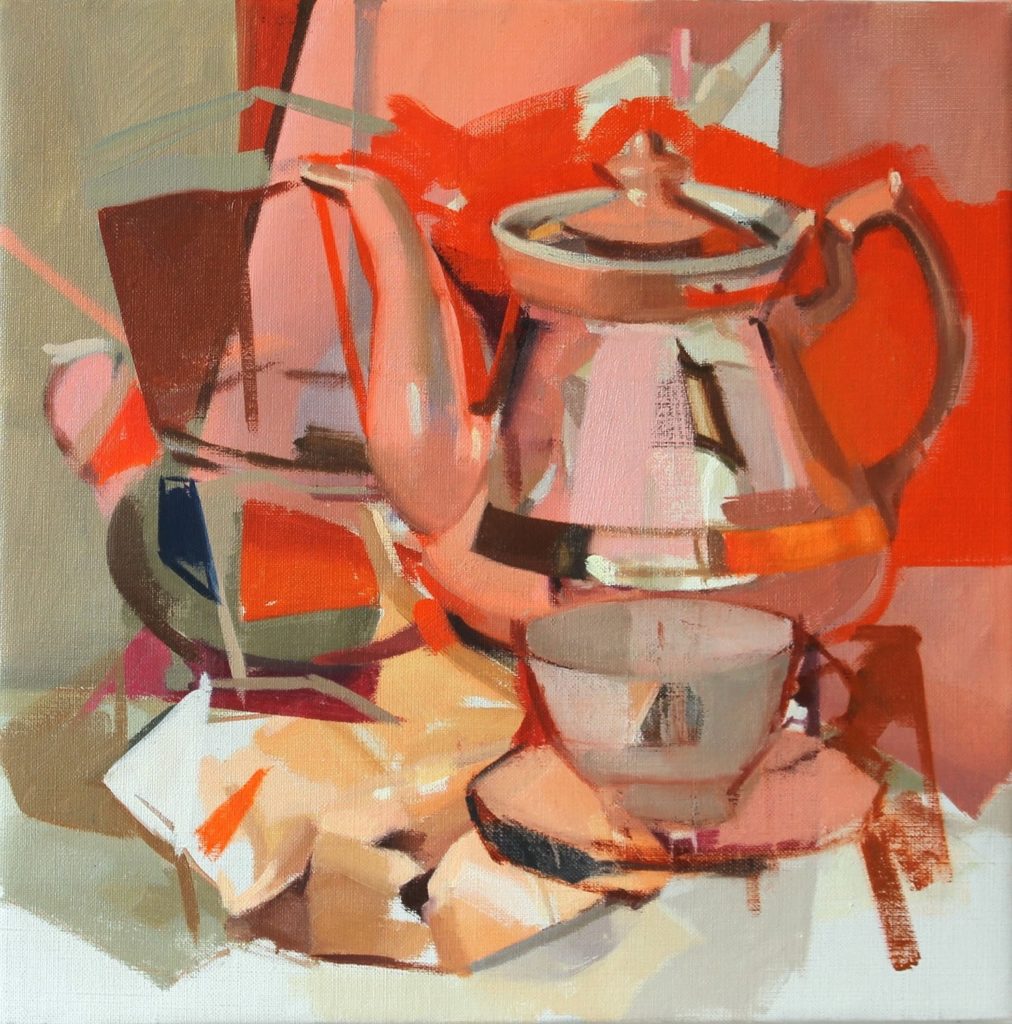
Eventually I took the paintings on paper and glued them onto the paintings on canvas. I was compelled to do this for some reason, and I liked what came of it. Formally, I got excited by the contrast of the two different kinds of forms. I liked that they didn’t make sense—the ceramic birds next to the plastic sculptures. Then, this lead to the discovery of how I could include text. If I hadn’t started working on paper, then collaging it, I wouldn’t have thought of adding pages from books. And the text is becoming the most important element of the Collage Paintings.


AB: The titles of your paintings seem to allude to ideas or references that the works evoke and add another layer to the experience of looking at them, as we ponder the connections. What role do titles play in your work?
AM: I love that you see them as another layer. There’s a collage painting called Fecal Soup. The title comes from a chapter in Jonathan Safran Foer’s book, Eating Animals, which I read shortly after moving to Michigan. Nearly every page is dog-eared, highlighted, underlined or starred. So when I began to collage pages from it onto the paintings, I also included a yellow sticky note with “Fecal Soup” written on it in red sharpie. It was bookmarking a description of a phase in the rendering process of chickens. I thought It would be a perfect addition with all of the associations that could be made with the colors red and yellow to what goes on in a slaughterhouse. But it stood out too much, so I tore it off and gave it a place as the title instead.

There’s a swirling pattern in that painting, and birds, and the torn white edges and colors on one piece of paper, when I went to glue it down, reminded me of bird shit. Others, loosely, had the shape of wings. I also had a conversation in the back of my mind that I once had with a painter friend about how there’s no such thing anymore as shocking a complacent bourgeoisie. So, with this title, in particular, I’m trying to shock a complacent consumer into giving a shit.
AB: The assemblages, paintings and photographs feed into each other and feel in some way like parts of a family. How do you describe the relationship between these different components of your work and the media that you use for each?
AM: They’re definitely parts of a family. After I made those first milk carton pieces, I didn’t paint from them right away. I continued working three dimensionally and took a lot of photographs, because the possibilities for paintings seemed endless and I wanted to get them down. When I did return to painting, I kept pretty faithful to what I saw in front of me.
So in the beginning, with the assemblages, I guess I felt like I had to take them further. I felt like I had to turn them into paintings rather than allow them to be works in their own right. I guess I still identified mostly as a painter, but also, the props are flimsy and clumsy and just didn’t fit into my idea of what a sculpture ought to be. More than a few friends have suggested casting them in bronze to give them more heft, but that would change the meaning. I think of them more like Morandi’s or William Bailey’s vessels—mostly companions in the studio and essential to the process. I have no idea if that’s how either of those painters felt about their collection of vases and cups, but it’s how I imagine the relationship when I see their paintings.
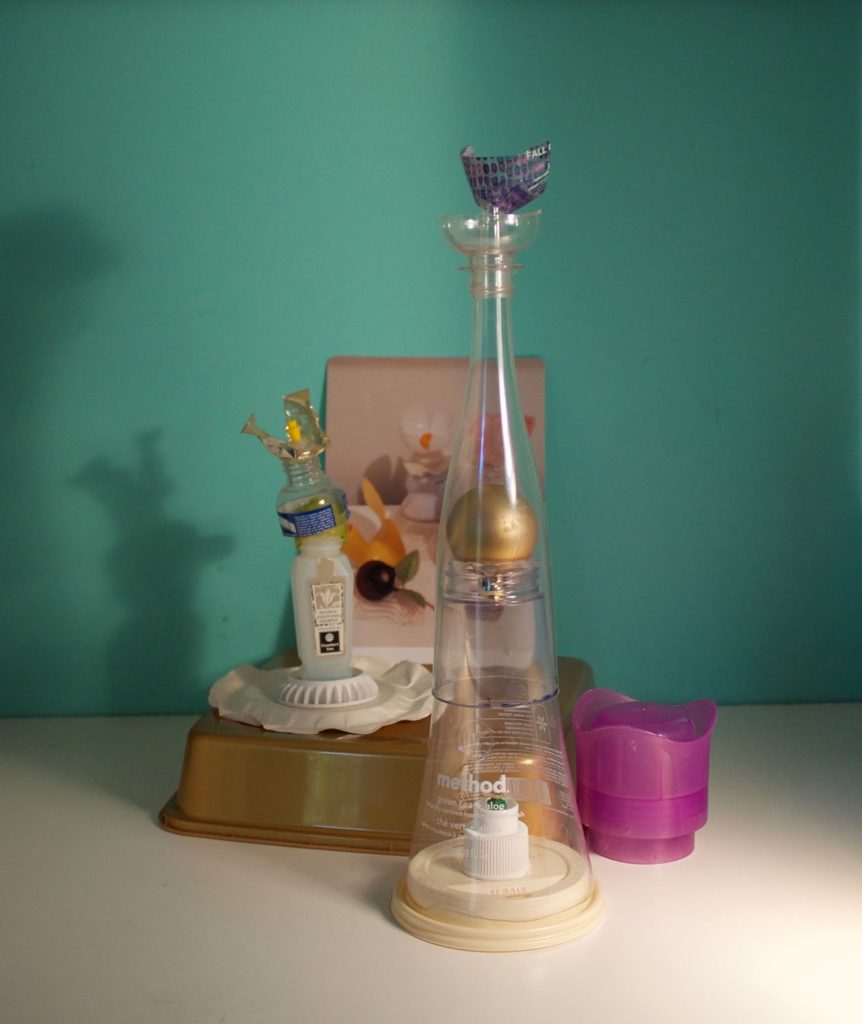
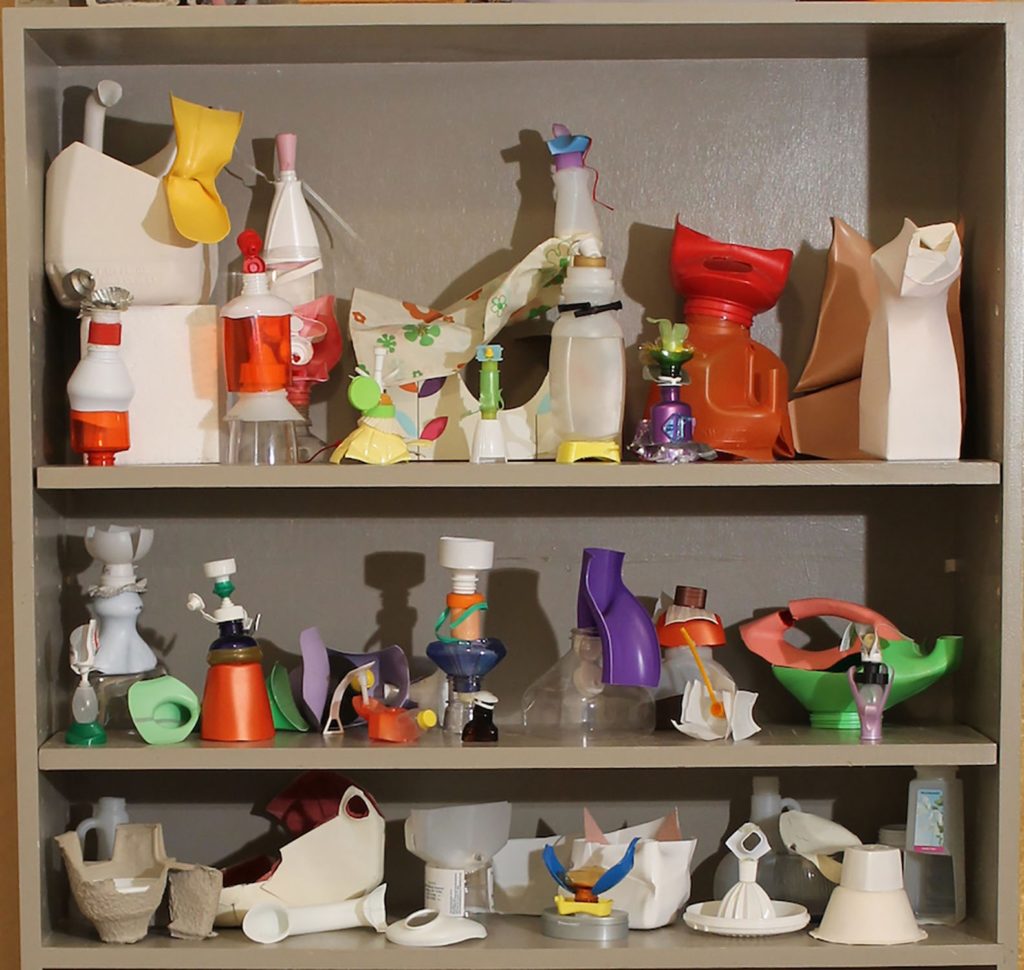
Another common element amongst the paintings, assemblages and photographs is fragmentation and an attempt to make something whole again, or to find, or forge, a connection between unrelated parts. When people ask me what I paint, and I’m tired or can’t articulate it very well, my short answer is that I make Humpty Dumpty paintings.
AB: You recently held a class called Representation into Abstraction, for artists who want to “push their work further, using collage and abstraction.” In your newsletter about this workshop you described collage as “an act of breaking something open while simultaneously repairing and connecting.” What role does collage plays in your work and process?
AM: It comes back to that idea of destruction being a necessary part of growth. Collage seems to embody that. It also feels like a very natural outgrowth of the Aggregates where I was kind of collaging with just paint. But with painting I think it’s easier to hide revisions. Whereas with collage, there’ll always be a seam, or a different and thicker texture to give me away. And I wonder if it might also prompt viewers to ask what the paper is covering up? I don’t think that happens when I work with just paint. In one of the collage paintings there are large pieces of plain paper which seem to call out for color or for something to be painted on them, but content-wise, they work better as blank shapes, out of place and not fully integrated.
AB: In your recent paintings, you have been collaging text directly onto your work. How does this inclusion of collaged text, even if unrecognizable when merged with paint, influence a painting?
AM: William Kentridge has a great talk available on YouTube about the creation and accumulation of meaning in a work of art. I agree with him wholeheartedly that one of the ways it gets in is through touch and interaction. There’s a segment where he describes, and kind of acts out, how the meaning of his animations would change if he had an assistant helping him, versus shooting the frames by himself. And in this same way, just the fact that I’m including text which I’ve read, and which had an impact on me, and that I’ve spent time finding a place for within a composition, even though it might have gotten covered up afterwards, the energy is retained. It might be beneath the surface, but it speaks through the layers and my emotional connection to it.

AB: What does collage contribute to painting that painting can’t necessarily do by itself?
AM: The ability to clearly quote text by tearing a page from a book and gluing it onto a canvas makes life a lot easier. In the new book painting studies I’ve been lettering the titles with paint. Sometimes I get into it and the process becomes a way to meditate on the words. But it can also be a chore. Now I’m thinking I’d like to collage the title into some of the new paintings, and maybe add some other kind of text to give a voice to animals. But maybe most importantly are all of the associations to be made with cut or torn, messy, curled pieces of paper. They are the same ones I make with the fragments of plastic, but with collage they seem more apparent and impactful.
Find more about Amy Mahnick on her website

